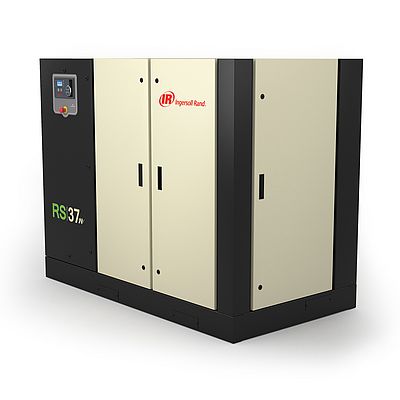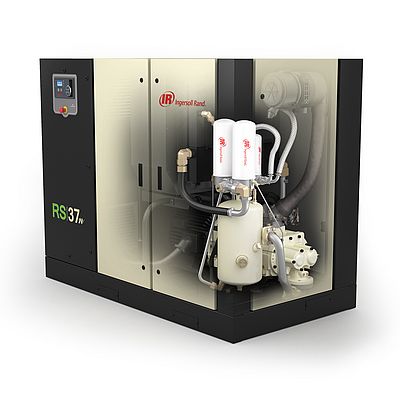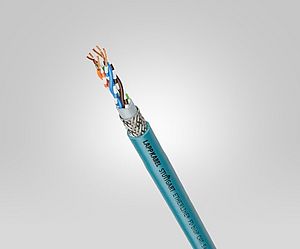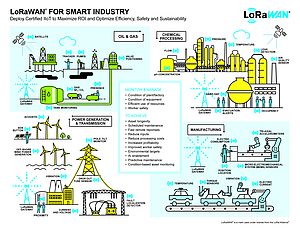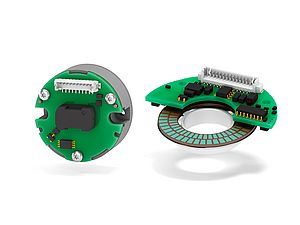Faced with increasing competition, high energy costs, increased regulation and more aggressive sustainability goals, facility owners and plant managers are under extraordinary pressure to reduce costs, while achieving greater productivity and energy efficiency. Most industries use some form of air or gas compression to generate power to run equipment, tools and plant processes. It is an extremely convenient source of power, often referred to as the fourth utility. Yet, in many cases it is deployed inefficiently. An estimated 30 to 50 percent of energy used in a compressed air system is wasted during operation. Those losses can be a result of leaks, poor maintenance, bad system design, heat loss and pressure loss.
This is why industries are making commitments to increase energy efficiency around the globe.
Efficiency standards are coming
In addition to self-regulating efforts, government bodies and industry groups are driving more stringent industry standards to ensure today’s air compressor systems meet peak energy efficiency and performance targets. Today, complying with proposed compressor standards is voluntary in the U.S. and Europe, but emerging regulatory developments are likely to change that.
Governing bodies leading the push for implementation of minimum efficiency standards include the European Union, which issued the Ecodesign Preparatory Study on Compressors (ENER Lot 31) in 2009, and the DOE Office of Energy Efficiency and Renewable Energy (EERE).
Industry groups, such as the European Association of Manufacturers of Compressors (Pneurop), Vacuum Pumps, Pneumatic Tools and Allied Equipment (PNEUROP) and the Compressed Air & Gas Institute (CAGI) drive the adoption of uniform, voluntary standards and provide many services, including research, education, information gathering and distribution and training to end users. These efforts are designed to increase the overall energy efficiency of compressed air products on the market while promoting cooperation, awareness and compliance with industry standardization.
Although the scope of U.S. standards for air compressors has only begun to take shape, industry groups agree that the end result of this energy standardization will likely be the promotion of minimum efficiency standards, product testing procedures, certification and enforcement of standards and energy efficiency labeling for air compressors. These anticipated changes will drive research and development teams to push the boundaries of efficiency with innovations in compressor technology as well as systems improvements, proactive service strategies and maintenance offerings for compression systems.
New compression solutions are already coming to market to help manufacturers significantly reduce their energy costs. For example, Ingersoll Rand recently introduced their Next Generation R-Series line of rotary screw compressors that improve energy efficiency by up to 13 percent, and even higher with variable speed drive options.
Energy efficient products are good for business
Manufacturers are motivated to gain a competitive edge by delivering greater performance and energy efficiency. However, when it comes to compressed air, energy efficiency cannot come at the cost of reliability because plants rely on a reliable source of power to maintain their productivity. This evolution within the industry leads to numerous queries: What can manufacturers and customers anticipate? When will they be required to comply with new energy standards and future regulations? And how can facility manager’s benefit from using high efficiency air compressors to lower costs, improve energy savings and improve performance?
There are advanced compressed air technologies available that are capable of providing improved performance, while reducing the customers’ energy footprint. What’s important to note is these improvements can be achieved while maintaining reliable compressed air that is required for highly effective operations.
Product innovation keeps energy efficiency ahead of the curve
To lower energy use and costs, the Ingersoll Rand Next Generation R-Series air compressor has been engineered to deliver increased capacity while consuming less energy. At the core of this model is an innovative airend, which is the most vital component of every air compressor.
A rotary screw compressor airend contains rotating, meshing helical rotors to compress air. These rotors require complex engineering to optimize efficiency and reliability. Many design factors like internal pressure ratio, rotor tip speed and rotor profile must be balanced. This is where expert engineering is critical to success. Ingersoll Rand befits from being able to leverage over a century of compressor experience with highly sophisticated modeling and simulation software to optimize every aspect of airend design.
Today’s compressors with advanced airends enable facilities to meet their demand with reliable compressors that consume less energy. Our analytics show that by using more efficient compressors and applying a comprehensive service program, we can reduce energy use and the total cost of ownership of the compressor by up to 20 percent.
Air compressors with adaptive controllers continuously monitor key performance parameters and automatically adjust settings to meet a specific application’s needs. Adaptive controllers use advanced control algorithms that automatically adapt to the environment. This delivers better performance, reduced downtime risks and energy conservation - providing built-in performance analysis for a wide range of load requirements.
Organizations developing standards and manufacturers share mutual interests
As energy costs and enivornmental acountability increase, facility managers in virtually every industry look for new ways to improve efficiencies. Compressed air systems are frequently targeted for improvement because of low return on investment opportunities that improve efficiency and system reliability. Industry standards will increase the minimum energy efficiency and ultimately help manufacturers and industrial users increase their competitiveness – without compromising safety and reliability.
By Eric Seidel, Vice President, Product Management, Ingersoll Rand Compression Technologies and Service


